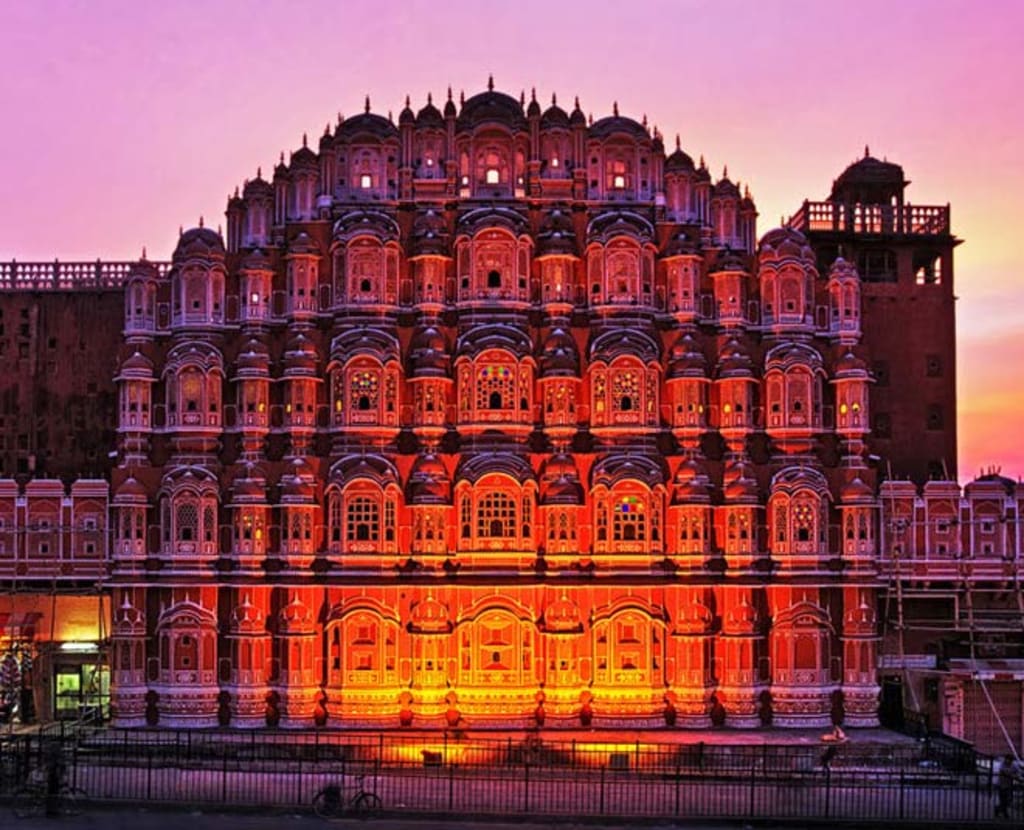
Hawa Mahal
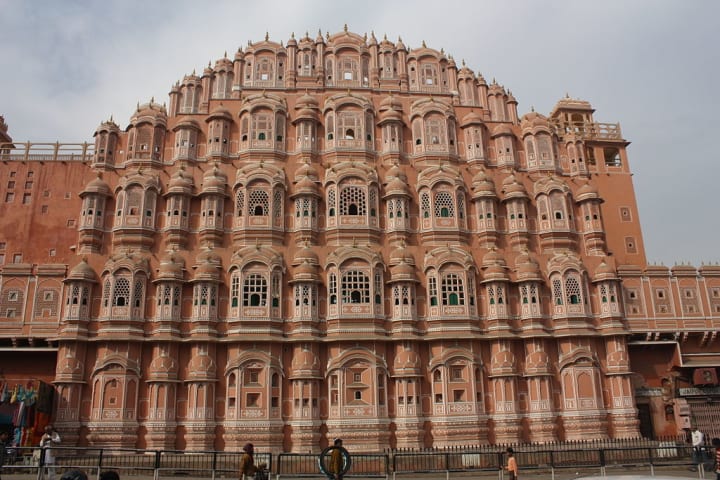
Hawa Mahal is a majestic-palace in Jaipur, the capital of the Indian state of Rajasthan. It was built by Maharaja Sawai Pratap Singh in 1799 and was designed by architect Lal Chand Usta like a 'Rajmukut'. Its unique five-storey building, which is only one and a half feet wide from the top, looks like a beehive when viewed from outside, with 953 very beautiful and attractive small lattice windows, called jharokha.The basic spirit behind making these windows lattice was that the women of the royal family strictly followed the "purdah system" without anyone noticing. Can do In addition, due to the "Venturi effect", cold air is always coming inside the palace through these intricately structured lattice windows, due to which the palace always remains air-conditioned even in hot summers.
Built of lime, red and pink sandstone, this palace is situated on the main road in the heart of the business center of Jaipur. It is part of the City Palace itself and extends to the Zenana Room or the Women's Room. It is a unique feeling to see it glowing in the golden light of the sun in the early morning.
Architecture :-
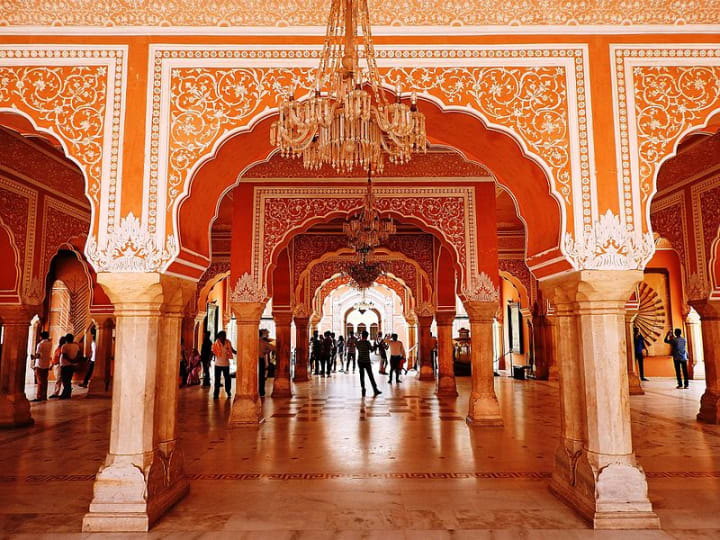
Hawa Mahal is a five-story monument with a height of 50 feet (15 m) from its main base. The dimensions of the width of the top three storeys of the palace are that of a room, while the lower two storeys also have an open courtyard in front, which is built in the rear part of the palace. Front of the palace, as seen from the main road in front of Hawa Mahal. On each of its small windows, there are very attractive and beautifully carved jaalis, kangoors and domes of sandstone.This unique structure itself boasts of many semi-octagonal vents, which make it unmatched in the world. The interior of the rear side of the building consists of rooms according to different needs, which have been constructed with pillars and corridors with very little ornamentation and they are similar to the top floor of the building.
Lal Chand Usta was the architect of this unique building, who also helped in preparing the craft and architectural plan of Jaipur city. The color of this palace made of red and pink colored sandstone in keeping with the decoration of other monuments in the city is a complete testimony to the title of 'Pink City' given to Jaipur. The front part of Hawa Mahal is decorated with 953 unique carved vents.(some of which are also made of wood) and it is in stark contrast to the rear of the Hawa Mahal, as the back of the Hawa Mahal is very plain. Its cultural and craft heritage is the Hindu Rajput craftsmanship.
The Hawa Mahal can be entered through the royal gates from the City Palace. It opens into a vast courtyard, flanked by two-storey buildings on three sides and the grand Hawa Mahal to the east. There is also an archaeological museum in this courtyard.
Hawa Mahal was the favorite resting place of Maharaja Jai Singh as its interiors are very beautiful. In all its rooms, cold air always flowed from the 953 vents located in the front part, to increase the effect of cooling in summer, there is also a provision of fountains in the front hallway of all the rooms.
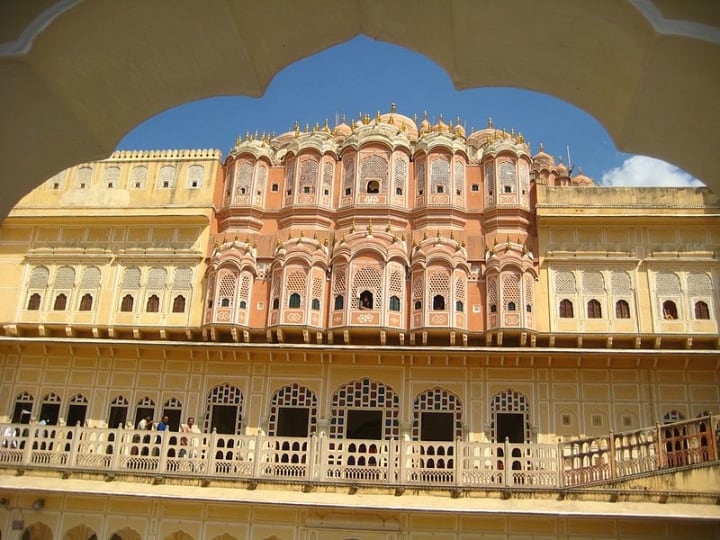
There is only provision for hooves to go to the top two floors of Hawa Mahal. It is said that keeping in mind the inconvenience caused by the queens wearing long girdles and climbing the stairs, a provision of hooves was made instead of stairs to enter its upper two storeys.
Repair and refurbishment :-
Hawa Mahal is maintained by the Archaeological Department of the Government of Rajasthan. In the year 2005, after a long gap of about 50 years, the palace was renovated and renovated on a large scale, at an estimated cost of Rs 45679 lakh. Some corporate houses are also now coming forward to maintain Jaipur's archaeological monuments, an example being the "Unit Trust of India" which took the lead in maintaining the Hawa Mahal.
Tourism information :-
Hawa Mahal is situated on Badi Chaupar in the southern part of Jaipur city. The city of Jaipur is directly connected to all the major cities of India by road, rail and air. The Jaipur railway station is the central station of the broad gauge line network of the Indian Railways.
There is no system of entry into Hawa Mahal directly from the front. To enter the Hawa Mahal, there is a system of entry from the right and left side of the palace, from where you can enter the palace from the back side of the palace.
Photo gallery :-
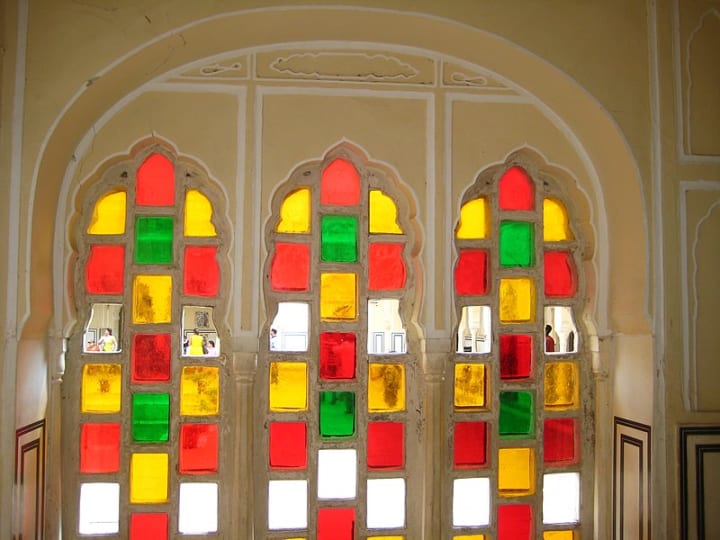
Unique craft of colored mirrors in the windows of Hawa Mahal. When sunlight enters the rooms of the palace through these colored mirrors, the whole room is filled with rainbow aura.
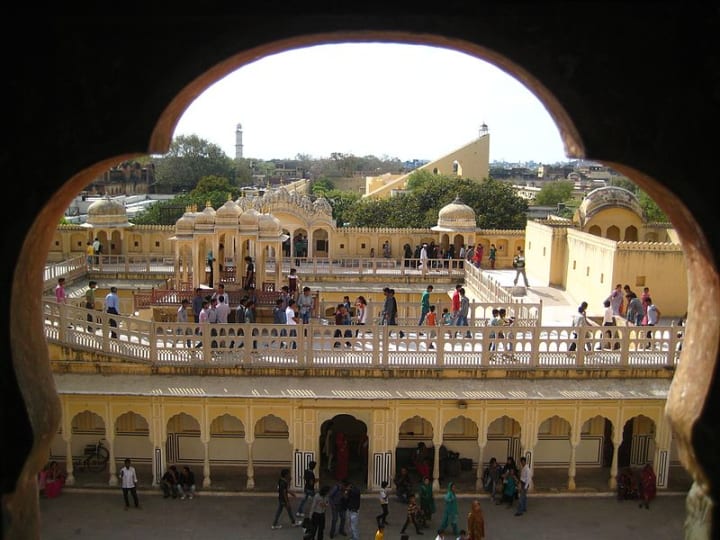
A great view of the rear of the Hawa Mahal from a window in the Hawa Mahal. In this photo you are seeing the Samrat Yantra of Jantar Mantar in the form of a slanting wall on the top right and Isarlat in the form of a tall tower on the left.
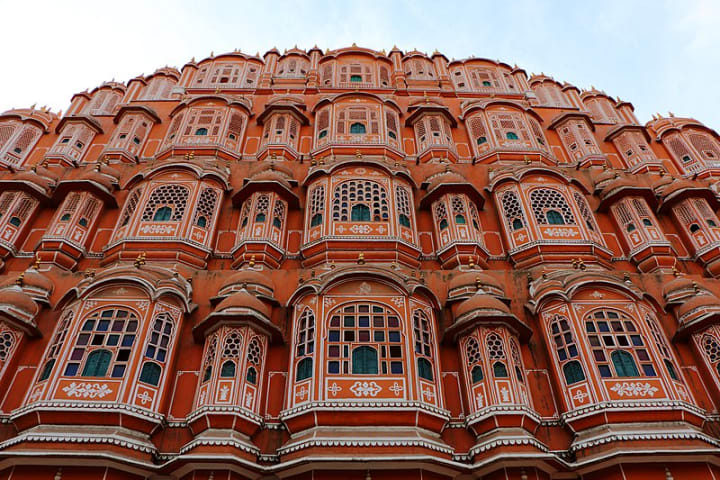
Horizontal panoramic view of Hawa Mahal.
About the Creator
Enjoyed the story? Support the Creator.
Subscribe for free to receive all their stories in your feed. You could also pledge your support or give them a one-off tip, letting them know you appreciate their work.


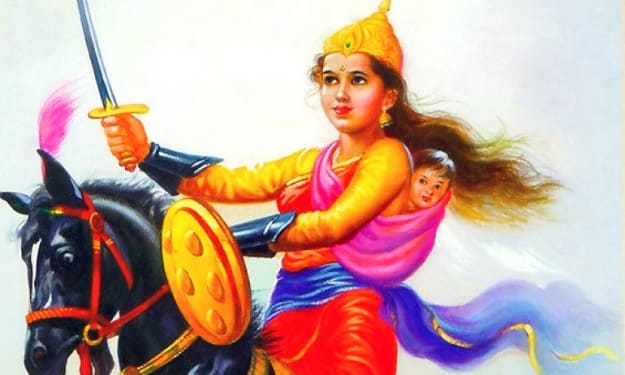

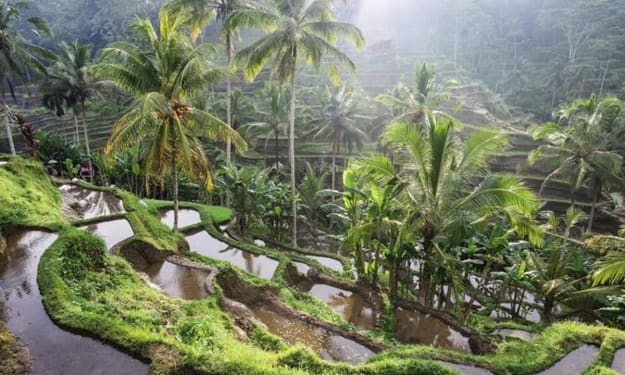

Comments
There are no comments for this story
Be the first to respond and start the conversation.